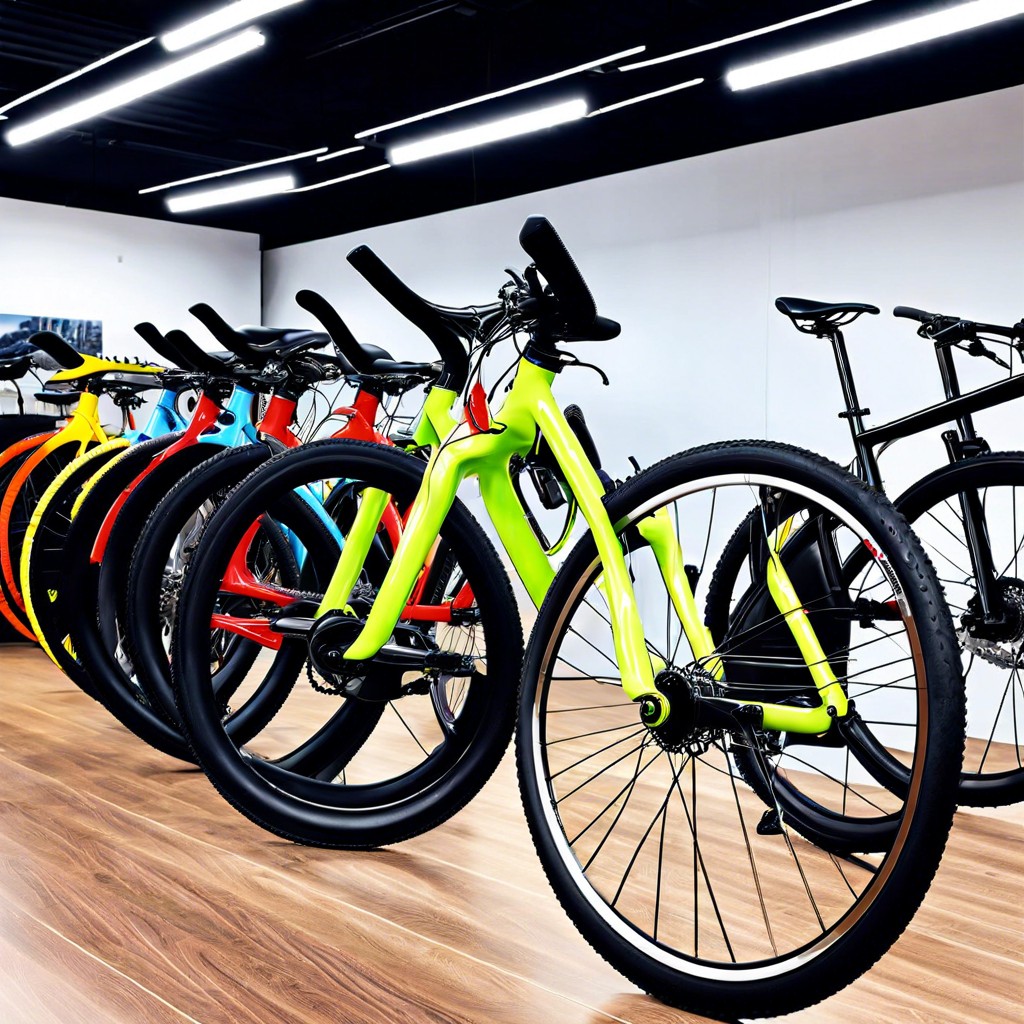In this buying guide, you’ll learn how to determine the cost of a bike based on its type, components, and purpose.
Key takeaways:
- Bikes can range from 0 to ,000+, depending on type and components.
- Road bikes start at 0; mountain bikes start at 0.
- Electric bikes start at ,000; BMX bikes start at 0.
- Consider purpose, fit, components, and wheel size when choosing.
- Online marketplaces like eBay and Facebook Marketplace are popular for used bikes; local bike shops and swaps are also great options.
How Much Do Bikes Cost?

Bike prices vary widely based on type, quality, and brand. Entry-level bicycles, including basic road, mountain, or hybrid bikes, typically start around $300 to $500. Mid-range options, offering better durability and features, are generally priced between $500 and $1,000. High-end bikes designed for specific disciplines like racing or advanced mountain biking can cost anywhere from $1,000 to $5,000 or more. Custom or handcrafted models may exceed these figures. The addition of advanced materials like carbon fiber and tailored components can escalate costs significantly. When budgeting, factor in the additional expense of essential gear such as helmets, locks, and maintenance tools which may add $50 to $200 to your initial investment.
Budget Considerations and Price Ranges for Different Types of Bikes
Understanding the cost of a bike hinges on identifying the type required for your activities. Road bikes, designed for speed and efficiency on pavement, can range from $500 for entry-level models to over $10,000 for high-end carbon fiber constructions.
Mountain bikes, built for off-road durability and performance, vary from around $400 for basic models to upwards of $8,000 for top-tier, full-suspension rigs.
Hybrid bikes, a blend of road and mountain bike features for general-purpose riding, are generally available between $300 and $1,000.
For those into BMX or trick riding, expect BMX bikes to cost between $150 and $500, though professional-grade models can eclipse $1,000.
Electric bikes, with their added technology and assistance, have a steeper price point, typically starting at $1,000 and soaring to $8,000 or higher.
Children’s bikes can be found for as little as $100, with more durable or specialized youth models climbing to $400.
Finally, custom builds and specialized bikes, such as cargo or tandem bicycles, have a vast price range, often dictated by the specificity of components and design features chosen.
When considering these price points, take into account the intended use, expected performance, and how often the bike will be ridden — factors that will guide investment decisions and help strike a balance between cost and utility.
Considerations When Choosing the Right Bike
Frame size and fit are paramount to ensure comfort and prevent injury. Measure your inseam and compare it to a manufacturer’s size chart for a precise match.
Purpose influences the choice heavily; a commuter bike needs reliability and provision for racks while a race bike prioritizes weight and aerodynamics.
Component quality impacts performance and longevity. Higher-tier drivetrains offer smoother shifting and are often lighter but at a higher cost.
Wheel size matters; 29-inch wheels roll over obstacles easier in mountain biking, while smaller wheels offer more agility in urban settings.
Suspension systems are relevant for off-road cycling, providing varying degrees of cushioning. Road bikes typically forego suspension for efficiency.
Test rides provide valuable insight. Never underestimate the importance of how a bike feels during a real-world trial, ensuring the right decision.
Maintenance and aftermarket support are vital. Access to spare parts and a wide range of accessories can enhance cycling experience and increase bike lifespan.
The Best Used Bike Marketplaces Online (& Offline Too) in 2024
Navigating the used bike market can be a savvy way to stretch your dollar further. In 2024, several online marketplaces have risen to prominence, offering a wide selection of bicycles for every type of rider. Websites like eBay and Craigslist remain staples for peer-to-peer transactions, though newer platforms such as Facebook Marketplace have become hotspots for local deals. For a more specialized experience, Pinkbike offers a vast array of high-end mountain bikes and components, catering to the off-road enthusiast.
Offline, local bike shops often have a selection of used or consignment bikes, providing the added benefit of being able to see and test ride the bike before purchasing. Community bike swaps and flea markets are also excellent for finding deals while supporting local cycling communities.
When buying used, it’s imperative to verify the condition of the bike. Check for frame damage, wear on the components, and ensure proper functioning of brakes and gears. Asking for the bike’s service history or any recent repairs can provide insight into its condition and how well it’s been maintained. Always meet in a safe, public space and consider bringing a knowledgeable friend or a bike mechanic if you’re unfamiliar with what to look for in a used bike.
Related
- How Much is an Electric Bike: Your Essential Buyer’s Guide
- Bike Size Charts: Find the Perfect Fit for Comfortable Riding
- How Much is an Electric Bike: Costs to Consider Before Buying
- How Much Are Electric Bikes: Cost Factors and Buying Tips
- What is an Ebike: Understanding the Basics of Electric Bicycles